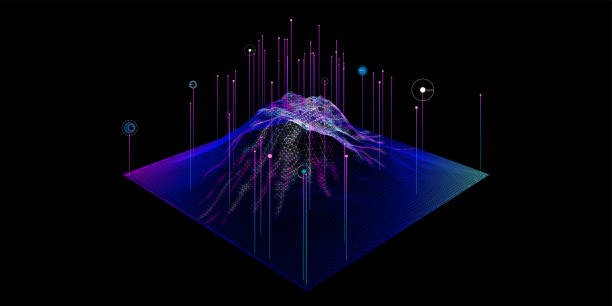Introduction: What is Pxless?
In the ever-evolving digital landscape, innovation is key to staying ahead of the curve. One such breakthrough is Pxless, a concept that promises to revolutionize the way businesses and individuals interact with digital tools. But what exactly is Pxless, and why should you care about it?
Pxless refers to a new standard in digital systems and interfaces that eliminate the need for traditional grid-based or pixel-perfect design constraints. It offers a seamless experience where content and features can adapt fluidly across devices, screen sizes, and user preferences. This approach significantly reduces design and development complexities, ultimately optimizing user experience.
In this article, we’ll explore the core aspects of Pxless, its benefits, and how it’s changing the game for digital designers, businesses, and users alike.
What Sets Pxless Apart from Traditional Design Systems?
1. The Problem with Traditional Design Systems
Traditional design systems rely heavily on pixel grids and fixed layouts, making it difficult to ensure consistency across various devices. For instance, designing for desktop screens, mobile phones, and tablets often requires significant adjustments in size, resolution, and orientation. These pixel-based designs lead to frustration when content doesn’t scale smoothly, often resulting in slower load times and less-than-ideal user experiences.
2. The Pxless Approach: No Pixels, No Problems
Pxless aims to eliminate these limitations by shifting the focus away from pixel-perfect designs to more flexible, adaptive systems. It leverages responsive design techniques that allow elements on a page to adjust in real-time to user needs and device constraints. With Pxless, content is no longer confined to rigid grid structures. Instead, the layout adapts dynamically, providing an optimal experience regardless of the screen size.
Why Pxless is a Game-Changer for Digital Experiences
1. Enhanced Flexibility
One of the most significant advantages of Pxless is its flexibility. By removing the constraints of traditional grids, designers can focus on content rather than layout. Whether you’re designing a website, mobile app, or dashboard, Pxless enables seamless content flow that works across all platforms. It offers more room for creativity and responsiveness, ensuring that users enjoy an optimal viewing experience on any device.
2. Improved Performance
Traditional grid-based systems can negatively impact performance, especially on slower devices or older browsers. With Pxless, the reliance on pixel-based designs is removed, resulting in faster loading times and improved overall performance. Since elements no longer need to be recalculated and adjusted based on fixed grids, the system can prioritize resource efficiency, which translates to a smoother user experience.
3. Streamlined Development
Designers and developers alike will find Pxless much easier to work with compared to traditional design systems. The simplified layout structure reduces the need for time-consuming adjustments and debugging. With fewer dependencies on specific screen resolutions and devices, developers can focus on core functionality, reducing errors and speeding up the development cycle.
How Pxless Is Reshaping Industries
1. E-Commerce Websites
For e-commerce platforms, user experience is paramount. Pxless offers a streamlined approach to product pages, checkout flows, and search functionalities that adapt seamlessly to various devices. This fluid approach helps keep customers engaged and reduces bounce rates, ultimately driving higher conversion rates. With a Pxless-driven design, businesses can create intuitive interfaces that cater to a wide range of user needs without the usual constraints.
2. Digital Advertising
In the world of digital advertising, where ads must perform across various screen sizes and devices, Pxless allows for dynamic, adaptable ads that adjust automatically based on the user’s device. This increases the effectiveness of digital campaigns, as advertisements are more likely to render correctly on mobile devices, tablets, and desktops, ensuring consistent engagement from users.
3. Mobile Apps
Mobile applications benefit immensely from Pxless, as the approach optimizes user interfaces for various screen sizes and orientations. This flexibility ensures that buttons, menus, and content will always fit within the context of the device screen, enhancing the overall app experience and usability.
The Technical Side of Pxless: How Does It Work?
1. Fluid Grids and Relative Units
At the heart of Pxless is the concept of fluid grids, which allow layout elements to be proportionally scaled based on the size of the viewport. Instead of using fixed pixel measurements, fluid grids use relative units like percentages, ems, or rems. This makes the design infinitely adaptable to different screen sizes without losing its structure or readability.
2. Media Queries for Customization
Pxless also takes advantage of CSS media queries, a technique that allows web pages to adjust based on characteristics like screen width, resolution, or orientation. With media queries, designers can create multiple layout versions for different devices, ensuring that the content remains legible and accessible no matter what device the user is on.
3. Flexible Content Design
Another key element in Pxless is flexible content design. Rather than forcing content into rigid containers, Pxless allows text, images, and other elements to scale freely according to the user’s screen size. This approach ensures that content is never cut off or improperly displayed, providing users with a better experience no matter how they access the platform.
Benefits of Adopting Pxless for Your Digital Platform
1. Cost-Effective Design Process
By eliminating the need for separate designs for each device type, Pxless significantly reduces development and design costs. A single, adaptive design is much more affordable to create and maintain than multiple designs for desktop, mobile, and tablet versions.
2. Future-Proofing Your Design
As technology continues to evolve, new devices and screen sizes are constantly emerging. The Pxless system provides a future-proof solution by adapting to these changes seamlessly. This eliminates the need for constant updates and redesigns to accommodate new technology, helping you stay ahead of the competition.
3. Better User Engagement
Because Pxless creates a smoother and more consistent experience across devices, users are more likely to stay engaged with your platform. Whether they are browsing on a smartphone, tablet, or desktop, they will experience a layout that adapts fluidly to their needs, keeping them happy and engaged.
Conclusion: Is Pxless the Future of Digital Design?
The rise of Pxless marks a significant turning point in digital design. By breaking free from the constraints of pixel-perfect grids and embracing a more flexible, adaptive approach, Pxless offers designers and developers the ability to create experiences that are both powerful and seamless.
Whether you’re developing a website, mobile app, or digital platform, adopting Pxless can help improve performance, enhance flexibility, and future-proof your designs. As the digital world continues to evolve, embracing this innovative approach will be crucial for staying competitive.
In conclusion, Pxless is more than just a trend—it’s a game-changing methodology that is reshaping how digital experiences are crafted, making them more intuitive, efficient, and user-friendly than ever before.
















Leave a Reply